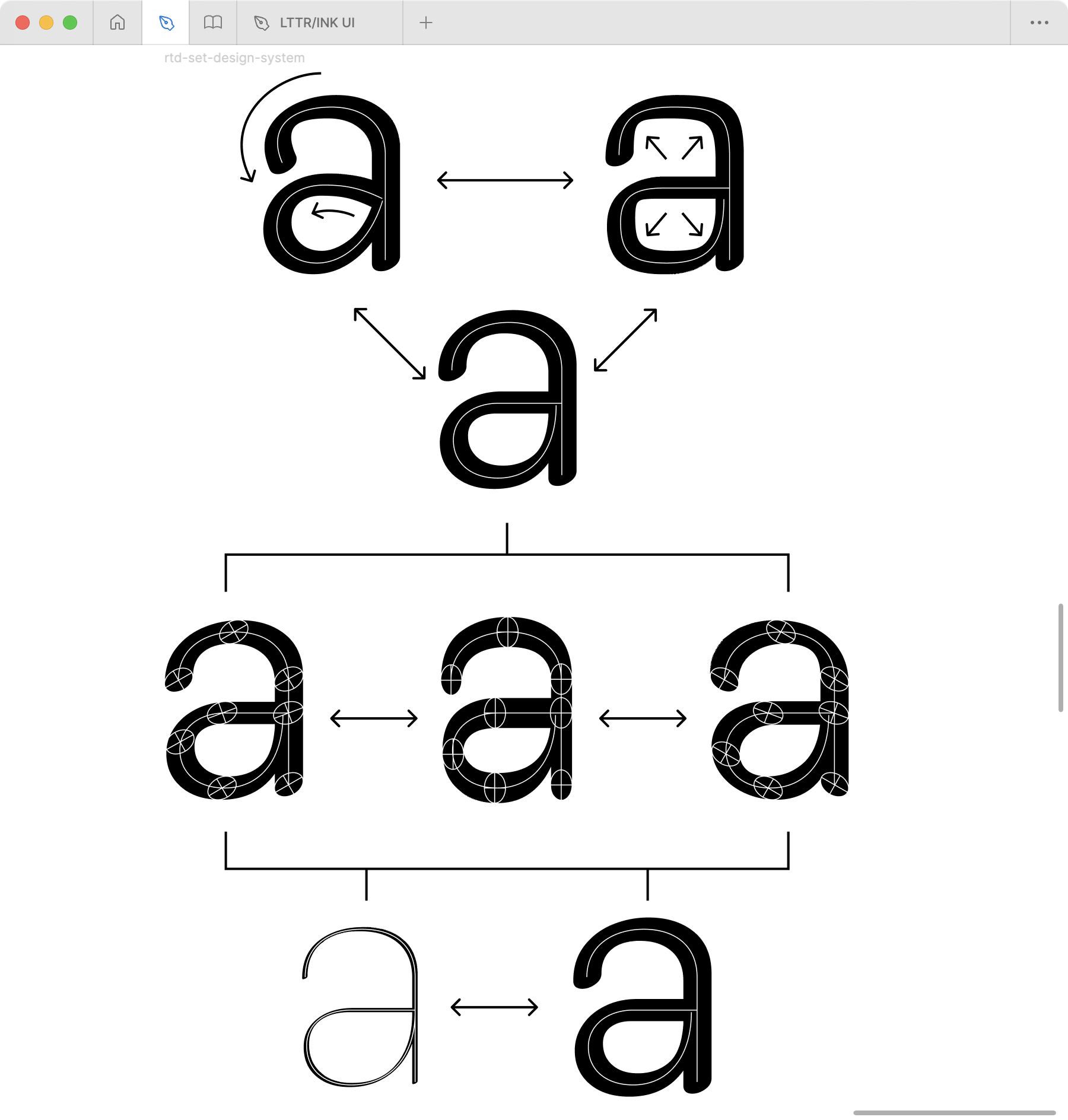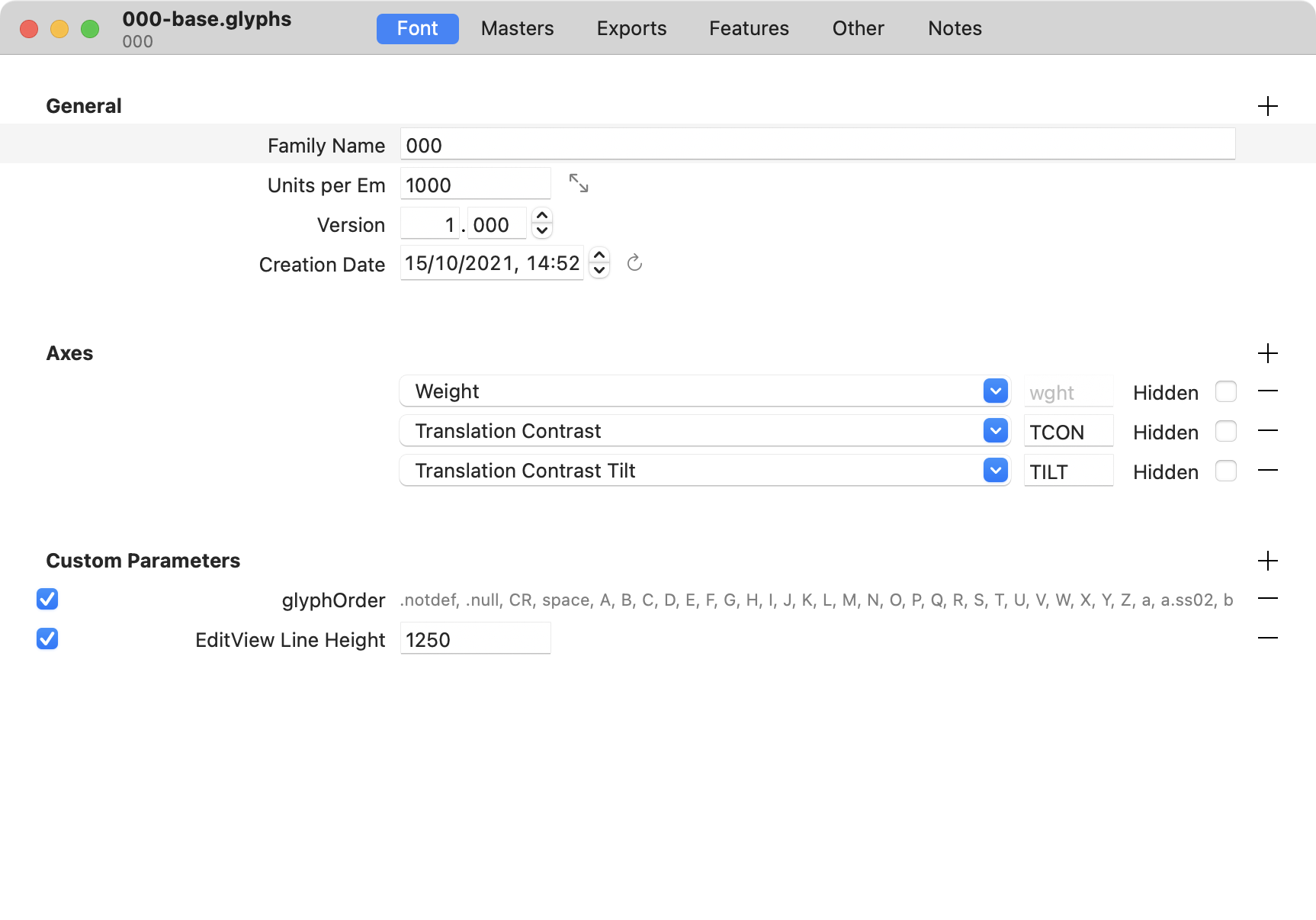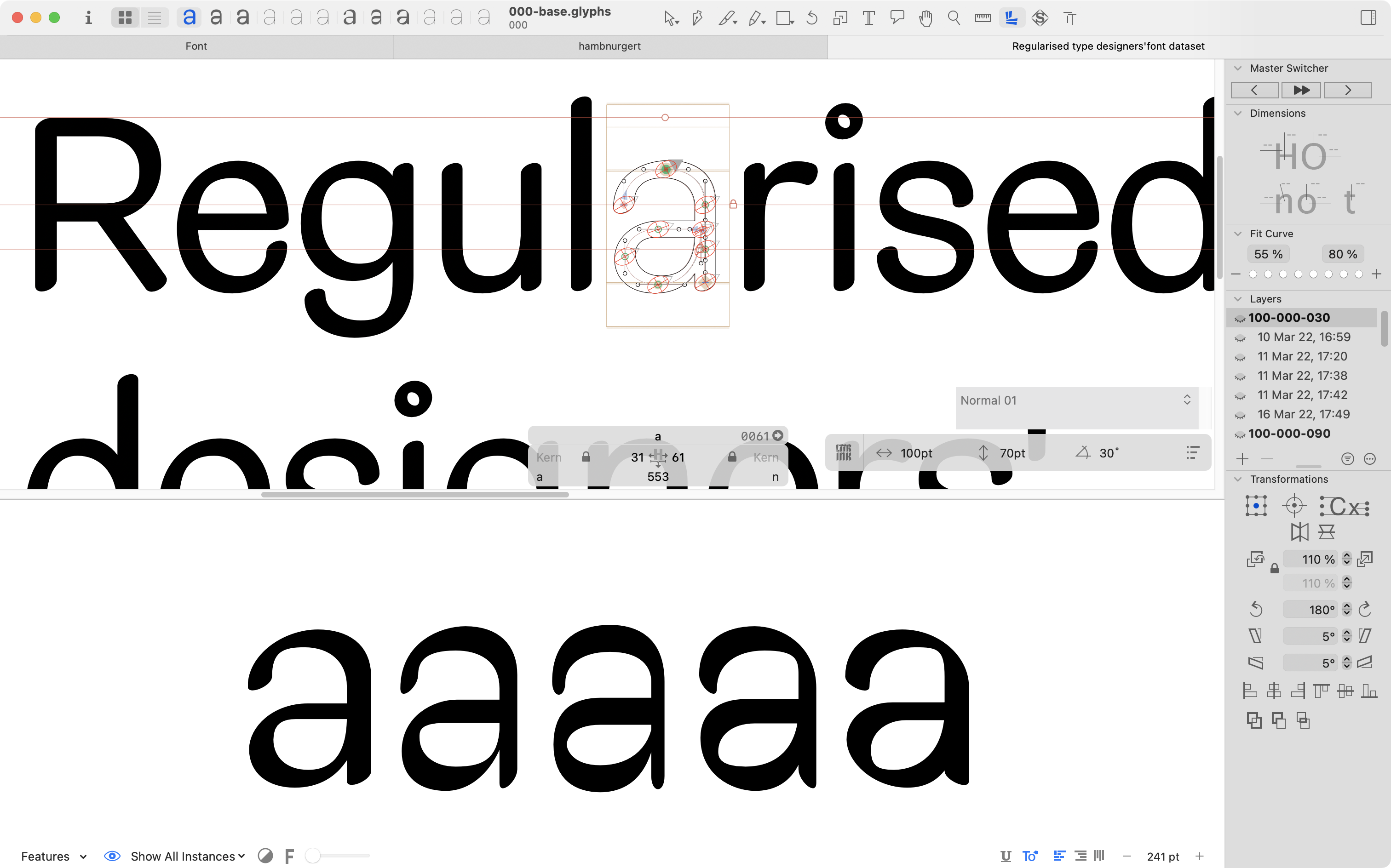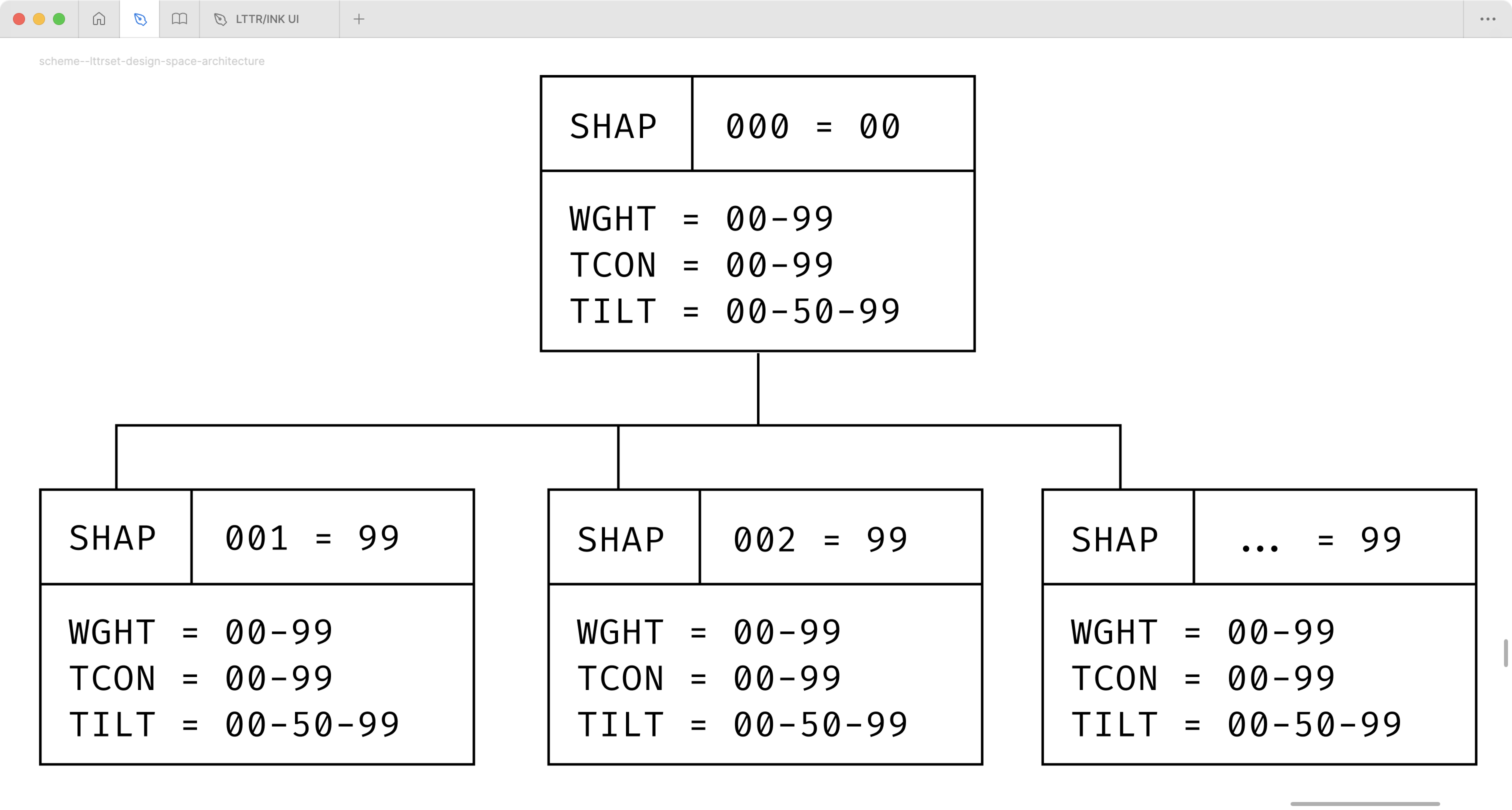4.2.2. Tools
The realisation of parametric skeleton type design necessitates a carefully orchestrated ensemble of digital instruments. This study employs two complementary tools: Glyphs (“Glyphs,” n.d.), a professional type design application that serves as the foundational environment, and LTTR/INK (“LTTR/INK” 2017–2024), a specialised plugin for stroke contrast emulation.
The Glyphs application (“Glyphs,” n.d.) serves as the cornerstone of this study’s technical infrastructure. This industry-standard software provides a sophisticated environment for type design through both its graphical interface and programmatic capabilities.
The LTTR/INK plugin (“LTTR/INK” 2017–2024) augments this foundation with an intriguing capability: the simulation of stroke contrast. Like a virtual writing instrument that never blunts, it enables precise control over stroke modulation patterns. This digital emulation of traditional writing tools presents an elegant solution for the systematic exploration of contrast variations – a bridge between centuries-old calligraphic techniques and contemporary parametric design.
The design space encompasses three dimensions: skeleton style,
weight, and nib tilt. The skeleton style axes, denoted as
001, 002, 003, and subsequent
identifiers, represent distinct writing trajectories – as if different
individuals were writing the same letters. Each skeleton style axis
operates on a scale from 0 to 99, where 0 represents a neutral skeleton
shape, and 100 embodies the full expression of that particular style.
Values between these extremes enable the blending of writing
characteristics, much like combining the handwriting traits of different
writers. Multiple skeleton styles can simultaneously influence the
neutral shape, allowing for sophisticated hybridisation of writing
patterns.



The weight and nib tilt axes operate independently for each skeleton style. The weight parameter controls stroke thickness, whilst the nib tilt range – spanning from 30 to 150 degrees – determines the angle at which the virtual writing tool interacts with the skeleton trajectory, thereby affecting stroke contrast and modulation.


Note that throwing a hundred per cent of all ingredients into the blender produces a spectacular, but the consumption can cause unexpected results. Therefore, the limit of ingredients is set. In the case of the skeleton style, the sum of all skeleton style values must not exceed 140. A somewhat arbitrary limit, but it serves as a useful constraint to prevent too many unexpected results.
